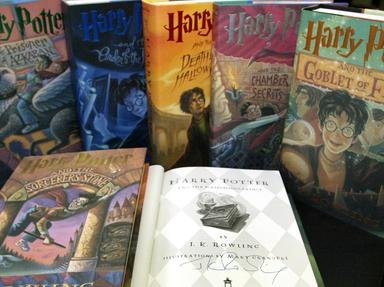Quiz Answer Key and Fun Facts
1. Which character translated this series of tales from ancient runes?
2. Who provides the notes and commentary for the tales?
3. What is the title of the first tale in the book?
4. In "The Tale of the Three Brothers," what gift did Death bestow upon the third and youngest brother?
5. "The Fountain of Fair Fortune" is an interesting fable about three witches and a hapless knight vying with hundreds of others to reach the Fountain and rid themselves of their misfortunes. What are the names of the witches?
6. "The Warlock's Hairy Heart" is, perhaps, the most grisly of the five tales. It is a tale of a warlock who views love as a folly and he only values his solitude. What makes him change his mind.
7. An imprudent King determines that only he should be able to perform magic in his kingdom. Which tale is this?
8. According to Professor Dumbledore's commentary, which of the following curses were classified as Unforgivable?
9. In the tale "The Wizard and the Hopping Pot," Beedle says that the father left all of his "chattels" to his son. What are chattels?
10. According to Professor Dumbledore's commentary, what is the moral of "The Tale of the Three Brothers?"
Source: Author
christopherm
This quiz was reviewed by FunTrivia editor
minch before going online.
Any errors found in FunTrivia content are routinely corrected through our feedback system.

